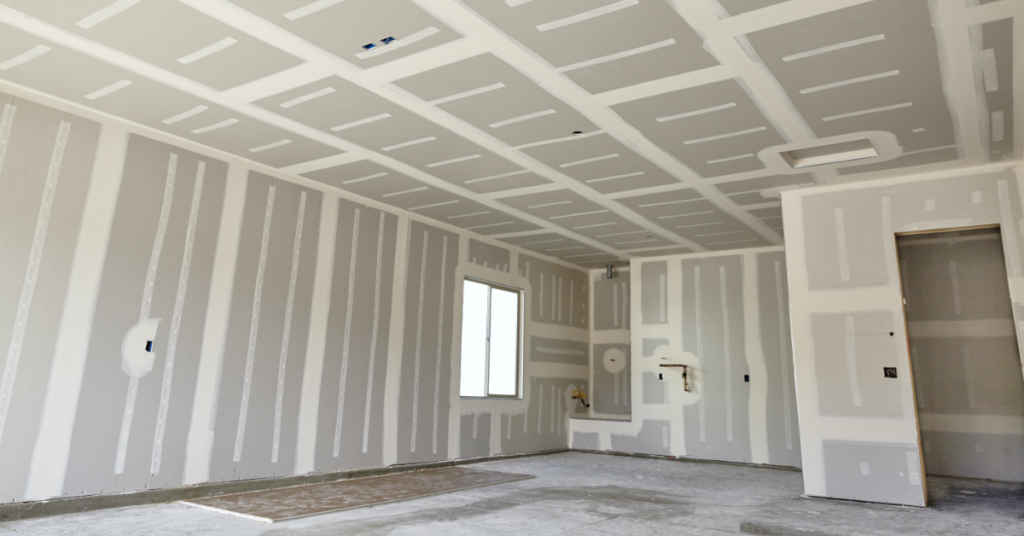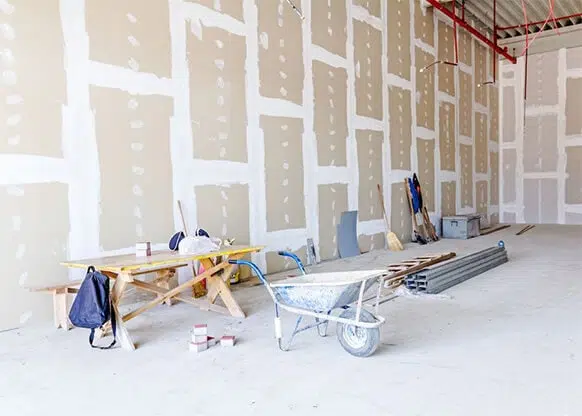Common Errors to Stay Clear Of in Drywall Repair Projects
Wiki Article
Every Little Thing You Need to Learn About Drywall Installment: A Comprehensive Guide

Comprehending Drywall Basics
Understanding the fundamentals of drywall is important for any type of successful installment task. Drywall, additionally recognized as plaster board or plasterboard, is a prominent construction material utilized to produce indoor wall surfaces and ceilings.
One important element of understanding drywall is recognizing the various kinds readily available. One of the most common kinds consist of routine drywall, moisture-resistant drywall, and fireproof drywall. Normal drywall appropriates for a lot of interior applications, while moisture-resistant drywall is recommended for areas with high humidity, such as bathrooms and cooking areas. Fire-resistant drywall is designed to offer extra protection against fire and is commonly required in business structures and multi-family homes.
An additional trick aspect of drywall essentials is understanding the basic dimensions and densities offered. The most usual sizes are 4x8 feet and 4x12 feet, with thicknesses ranging from 1/4 inch to 5/8 inch. Thicker drywall is commonly used for applications that need raised fire resistance or soundproofing.
Tools and Materials Needed for Drywall Setup
To efficiently mount drywall, it is important to have the required tools and products available (drywall installation). These products and devices are important for achieving a specialist finish and guaranteeing the resilience of the installmentFirstly, you will certainly require a gauging tape to properly gauge the dimensions of the location where the drywall will certainly be set up. An energy knife is necessary for cutting the drywall to the needed shapes and size. Furthermore, a drywall saw can be used for making more intricate cuts, such as around outlets or home windows.
Following, you will certainly require a screw gun or a drill with a screwdriver bit to secure the drywall to the wall surface studs. Screws, especially drywall screws, are required for affixing the drywall to the studs. It is very important to make use of the appropriate size of screws to ensure a flush and secure installment.

In terms of products, you will certainly need the drywall itself, joint substance for completing voids and seams, and tape for reinforcing the joints. Sandpaper or a fining sand block will certainly be required for smoothing out the joint substance after it has actually dried.
Preparing the Area for Drywall Setup
Prior to waging the drywall installment, it is vital to appropriately prepare the room to make sure a successful and smooth installation process. Preparing the space includes numerous crucial steps that need to be complied with carefully.First of all, it is important to clear the area of any kind of furnishings, components, or other things that might block the installation procedure. This will give the installers with adequate room to work and maneuver around. Furthermore, it is suggested to cover the floorings and any type of remaining items with protective sheets or ground cloth to avoid any kind of damage or particles from dropping onto them.
Following, it is very important to examine the walls and ceiling for any type of existing damages, such as cracks, openings, or water stains. These concerns need to be fixed prior to the installation to ensure a smooth and even surface area for the drywall. Any kind of loosened paint or wallpaper should additionally be removed, and the wall surfaces need to be completely cleaned and dusted.
Furthermore, electric and pipes components must be turned off and secured to protect against any crashes or damage throughout the installment procedure. It is essential to switch off the power supply to the area and get rid of any kind of electrical cover layers before starting the setup.
Lastly, it is advisable to talk to an expert or describe regional building ordinance to make sure conformity with safety and security laws and acquire any kind of essential licenses prior to proceeding with the setup. By appropriately preparing navigate here the area, you can guarantee a effective and efficient drywall installation process.
Step-by-Step Guide to Hanging Drywall
To make sure an effective drywall setup, it is essential to adhere to a detailed guide for hanging the drywall (Edmonton drywallers). This process needs accuracy and attention to detailFirst, gather all the required tools and materials, including drywall sheets, an utility blade, a drywall saw, a tape procedure, a drill, and screws.
Following, begin by gauging the measurements of the wall or ceiling where the drywall will certainly be mounted. Transfer these measurements onto the drywall sheets, marking where cuts need to be made - drywall repair. Use a straight edge and an utility blade to score the drywall along the significant lines, after that snap it along the score line
Once the drywall sheets are reduced to dimension, they can be held on the wall surface or ceiling. Beginning at one corner and place the initial sheet up and down against the framework. Use screws to protect the drywall to the studs, seeing to it to leave a little space between sheets for growth.
Discover More Proceed this procedure, working your means across the wall or ceiling. Make sure that each sheet is degree and flush with nearby sheets. Make use of a drywall attended remove any kind of essential openings for electrical outlets or buttons.
Ending Up Techniques for a Professional Look
Now that the drywall sheets have actually been efficiently hung, it is necessary to employ ending up methods that will certainly lead to a expert and refined look. Accomplishing a smooth and perfect finish on drywall requires cautious interest to information and the use of correct tools and strategies. Among the primary steps in the completing procedure is to fill up the joints and screw imprints with joint substance. This can be done by using a thin layer of substance over the joints using a taping knife, and afterwards installing drywall tape into the compound. As soon as the tape remains in location, another layer of substance need to be applied over it, feathering the sides to create a smooth shift. After the compound has dried out, it is vital to sand the surface area to eliminate any imperfections and produce a smooth surface. A post sander or fining sand block can be used for this purpose. The walls need to be topped and repainted to complete the completing process. Using top quality paint and using it uniformly with a roller or brush will certainly make sure a expert and durable surface. By complying with these ending up methods, your drywall setup will have a polished and professional look.Conclusion
Finally, recognizing the fundamentals of drywall setup is vital for an effective job. By making use of the correct tools and products, preparing the room appropriately, and following a step-by-step overview, one can accomplish a professional-looking coating. Attention to completing techniques will additionally enhance the overall look. With this comprehensive guide, anybody can confidently take on a drywall installation job.The most typical kinds consist of routine drywall, moisture-resistant drywall, and fireproof drywall. Regular drywall is ideal for most indoor applications, while moisture-resistant drywall is advised for areas with high humidity, such as kitchen areas and washrooms. Screws, specifically drywall screws, are necessary for connecting the drywall to the studs. These issues need to be repaired before the installation to ensure a smooth and also read what he said surface for the drywall. By adhering to these ending up methods, your drywall installation will certainly have a professional and polished look.
Report this wiki page